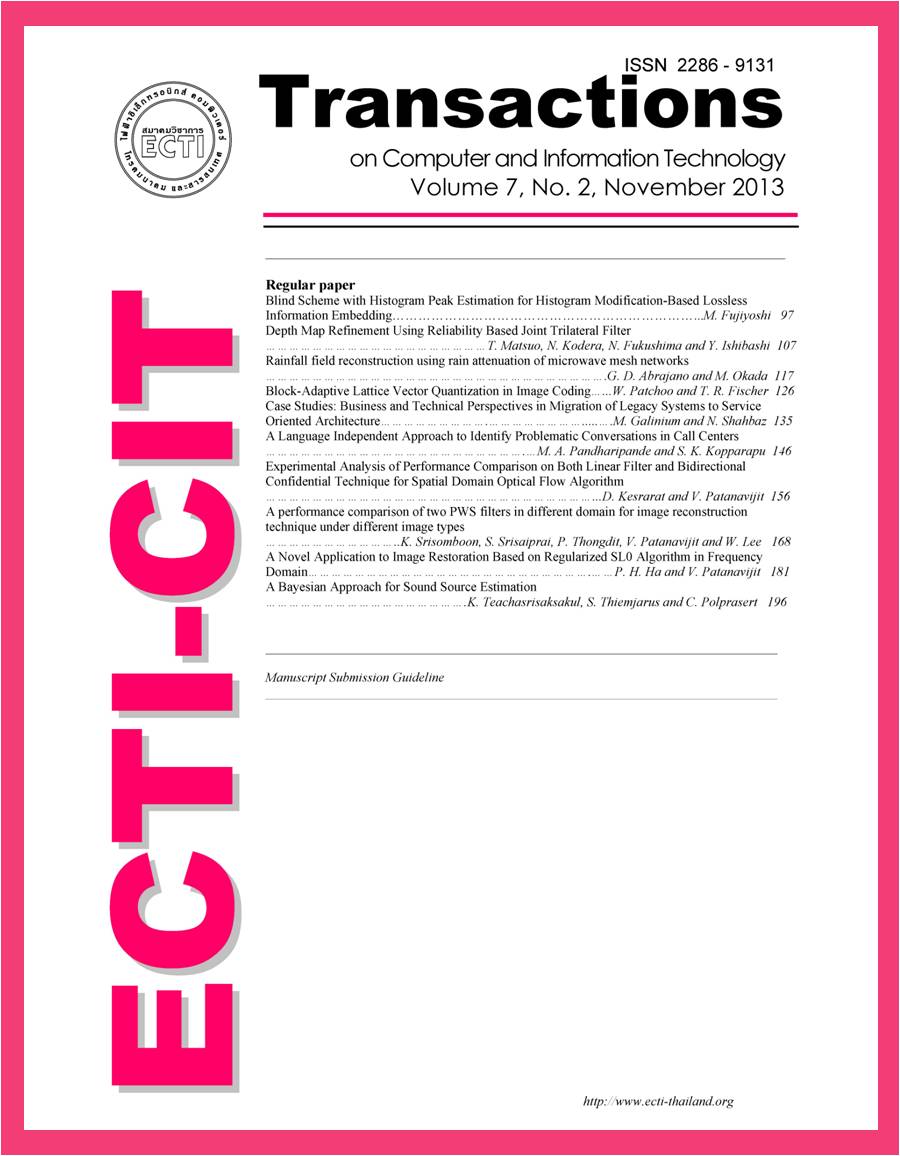Experimental Analysis of Performance Comparison on Both Linear Filter and Bidirectional Condential Technique for Spatial Domain Optical Flow Algorithm
Main Article Content
Abstract
Optical flow is a method for classifying the density velocity or motion vector (MV) in a degree of pixel basis for motion classification of image in video sequences. In actual situation, many unpleasant situations usually generate noises over the video sequences. These unpleasant situations corrupt the performance in efficiency of optical flow. In turn to increase the efficiency of the MV, this research work proposes the performance comparison on linear filter and bidirectional confidential technique for spatial domain optical flow algorithms. Our experiment concentrates on the 3 classical spatial based optical flow algorithms (such as spatial correlation-based optical flow (SCOF), Horn-Schunk algorithm (HS) and Lucas-Kanade algorithm (LK)). Different standard video sequences such as AKIYO, CONTAINER, COASTGUARD, and FOREMAN are comprehensively evaluated to demonstrate the effectiveness results. These video sequences have differences in aspect of action and speed in foreground and background. These video sequences are also debased by the Additive White Gaussian Noise (AWGN) at different noise degree (such as AWGN at 25 dB, 20 dB, and 15 dB consequently). Peak Signal to Noise Ratio (PSNR) is utilized as the performance index in our observation.


